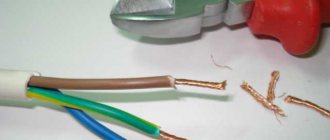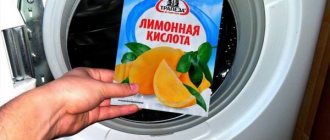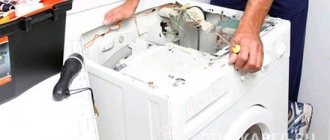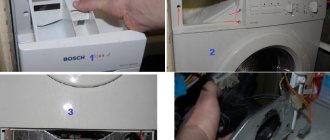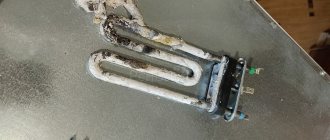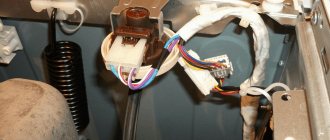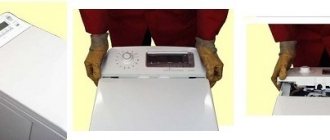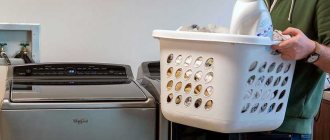Doing laundry at the dacha is a difficult task. You can use a washboard or just your hands, but this is long, inconvenient and difficult. It is necessary to develop the possibility of installing a washing machine, but how to connect an automatic washing machine in a country house without running water?
A washing machine without a water supply connection with a water tank is a great idea for those who are not afraid to improve the quality of their life with their own hands. Let's look at the features, instructions and options for connecting a washing machine in a country house without a centralized water supply.
Washing machine for a dacha without running water - profitable and convenient
All you need is water and electricity. Even in old dacha cooperatives there are no problems with electricity. Unstable, periodic, with low voltage, but it is there.
Connecting a washing machine if there is no running water
And plumbing has still not been installed in most private areas in the CIS. It's not difficult to imitate a drain. It is enough to take the pipe to the toilet or prepare the tank in advance. The main thing is the availability of electricity.
As for water supply, you can choose from:
- well;
- well;
- rain.
Even in the absence of a permanent source of water, you can take advantage of the rain that often falls during the summer season.
Container with water
Today, few people are attracted to using old-style products, where the laundry needs to be wrung out, rinsed by hand, and then loaded into a centrifuge. Automatic devices reduce effort and time spent to a minimum. The problem is that to use the washing machine, you need at least 1 bar of water pressure at the inlet. The easiest way to create one is to create a water tower prototype. To do this, you will need a container with a volume of at least 200 liters, installed in the attic or second floor. Most homes already have tanks installed to supply water to the kitchen sink.
To connect a washing machine without running water, you need to raise the tank as high as possible using supports or hangers. After this, all that remains is to make a hole in its bottom in which to secure the end of the high-pressure hose. Drilling holes in the ceilings will not be difficult. The disadvantage of this solution is that if there is no well and pump on the site, you will have to fill the tank manually, climbing ladders with buckets.
You can solve this problem in a house without running water using a container in the following ways:
- Install a pipe system into which to connect a hand pump (BKF). The performance of the product is high enough to raise the required volume of liquid to a height in a few minutes.
- Make a rainwater collection system. This method is the most effective, since rainwater is free, it does not contain salts and calcium, which lead to the formation of scale on the heating element.
Another option for pressurizing the system is to install a pressurized tank. It is created by a hand/foot pump or an electric compressor.
When choosing this technology, it is necessary to consider heating the tank in the cold season if it is installed in the attic.
It can be insulated from the outside, inserted inside a heating element or wrapped with a heating cable. If the house has autonomous heating, then it is advisable to install it at the level where the tank is located.
Ways to connect an automatic washing machine in a country house without running water
There are many options. For the average summer resident, 4 installation methods are immediately available without connecting to a water supply.
Container for detergents
The simplest and most cost-effective method that does not require investment. In machines with horizontal loading, it is possible to add water during the washing process. This is done through the powder collection compartment.
How to pour water into a washing machine at the dacha
Pros:
- Price. No need to spend money on a pump or additional equipment. You don't even need hoses and tubes. A bucket or any other container is enough to pour the liquid inside.
- Simplicity. You don't even need a tool for assembly. If you don’t understand anything about the workings of a washing machine and don’t want to figure it out, this is your option.
Minuses:
- Inconvenience. It turns out to be an ordinary machine with manual filling. Conventional semi-automatic Soviet devices, which can hardly be called convenient, work exactly on the same principle. A constant presence is required to monitor the water level and add it as needed.
- Limitation. Some programs will not be able to be used because the thermal electric heater is not activated.
If you are willing to put up with the inconvenience, you can use this method.
Water tank
Semi-automatic installation method. It involves installing a water tank at a certain height, which flows by gravity into the washing machine in the traditional way. The hose from the container goes to the water intake hole.
The simplest and most effective option: a water tank
If you have a suitable container, this method will be the easiest and least expensive. The tank can be anything: metal, wood, plastic.
Pros:
- Automatism. No human presence is required. While the washing is happening, you can go about your business. You don’t have to worry about the design – it has been tested by time. With a sealed connection, there is no need to monitor for leaks and sudden cessation of flow.
- Easy to install. There is no need to install or configure the pump. Just connect the hose to the inlet and you're done.
Minuses:
- Lack of pressure. Without forced supply, the pressure will be mediocre. For normal operation, you need to raise the container to a height of ten meters. Then the powder will be washed off without any residue. Not every house has such a height. And building a water tower is expensive.
- Preparatory work. For the machine to work, you need to fill the reservoir with water. The container must be at least 100 liters and they must be raised to a height of ten meters.
Well drilling
If you have a well, the problem is almost solved. When drilling and installing a well, a pumping station is immediately installed, which will move water in the future. Simply connect to the output.
Drilling a well for a summer residence
Pros:
- Possibility to wash at any time. If previous methods required preparatory work and observation, this one is fully automated. You don't have to carry water to fill the tank or make sure that its level doesn't drop in the machine. Just connect to the well outlet and the process begins.
- Unlimited water supply. Can be washed several times every day. The only cost is electricity to power the pump. But you won't have to pay for water.
Minuses:
- Impurities. The well is not always installed correctly. Despite the fact that artesian water should be clean and suitable for drinking, it can contain many impurities of salts and minerals. Incorrect location and low height leads to the ingress of groundwater and silt. This makes it unsuitable not only for drinking, but also for washing.
- Price. If you don't have a well, drilling one will be extremely expensive. Despite the high productivity, prices for water supply are high.
Using the pump
A compromise between previous options. The pump is inexpensive and can be found at the construction market or in a plumbing store. Installed between the washing machine and the water source. If you have a well or reservoir, problem solved. The pumping station independently creates the pressure needed for the machine to operate.
Pros:
- The pressure is created independently. You can use stations together with tanks. No need to build a water tower or install it on a hill. The pump will automatically suck out the required amount of water.
- Any source. Collect the required volume of liquid and run a hose into it. The source can be a regular tank or well.
- Price. Surface pumps are available, sold at plumbing supply stores.
Supplying water to a washing machine without running water
In villages without running water, they rarely use an automatic washing machine. Traditional activator versions are popular here—you fill a couple of buckets of water, wash it, and drain it. Everything is done by human hands. Summer residents are city people accustomed to comfort, so the prospect of carrying water with their hands does not appeal to them. If connecting a water supply to your dacha is impossible, you have to get creative.
Manual method
The simplest and most irrational method. Why buy SMA for your dacha if you fill it manually? Unless they are using an old device that has been retired. Filling is done through the powder compartment. Resourceful and simple. But keep in mind that if you do it this way, you will have to restart the program every time after filling it in:
- pour the powder and load the laundry into the drum;
- include the desired program;
- pour in several buckets;
- SMA freezes;
- restarting the program;
- washing begins, the water is drained upon completion;
- SMA freezes again;
- pour in several buckets again - for rinsing;
- the program starts again - the laundry is rinsed, and at the end of the process - drained;
- they start the spin cycle, after which the wash is finally completed.
It is clear that such washing is tiring and time-consuming. You have to stand near the machine to top up a bucket or two as needed.
Filling from reservoir
You can connect the washing machine without running water if you use a large container. It must be located at a height - on the second floor, if there is one, or in the attic. A long hose is pulled from the tank. This seems like a simple method, but in reality it's complicated:
- There must be at least ten meters between the SMA and the tank. You cannot build such a structure in a low house.
- If the pressure on the intake valve is less than 1 bar, the SMA will simply freeze. The tank has to be placed high enough to provide the required pressure.
- The container must first be filled. It turns out that summer residents have to carry buckets upstairs. One full wash requires 100–200 liters. That's how much will have to be raised up.
Considering the physical steps involved in filling a tank in the attic, few people would like this method. It is much easier to fill the tank of a conventional activator machine.
Well
There is another option for connecting a washing machine to water - organizing a mini-pumping station. Connecting a washing machine like this to a country house requires investment. What to do:
- Drill a well. This is done in the warm season - when the ground is thawed.
- If the water is deep, it will take a long time to drill. The deeper the well, the more powerful the mini-pumping station.
- It is necessary that the liquid coming to the top be of high quality - meet technical standards. If it contains a lot of metal salts and other impurities, it is not suitable for washing.
Installation of a compact blower
The simplest connection is using a small pumping device. Let's consider the simplest scheme: tank - pumping station - washing machine. As far as purchases go, you only need to buy a pump (costs about $20). You will need an extension cord for it (you can assemble it yourself from a network cable and an external socket). To secure the adapter you need silicone sealant.
Tank – pumping station – washing machine
Further according to the scheme:
- You need to prepare the tank. A hole is drilled in the wall using a drill or screwdriver. It is advisable to take a plastic one, as it is easier to install an adapter in it (if you are using a well, lower the hose into the water).
- The resulting hole must be sealed. It is better to buy sealant in automobile stores. It should be tight and stick securely. Sanitary sealants do not work well.
- The pump hose must be sanded. Plastic tubes have a smooth surface that is not suitable for gluing. Go over it with coarse sandpaper, treat it with sealant and pull it onto the adapter.
- Pumps often come without a power cord. At the contact site there are only bare contact pads. They need to be soldered or connected with terminals. Seal the joints with heat-shrinkable tubing or electrical tape.
- Connect the pump to the machine.
Remember that sealants take 24 hours to cure. If you need water, connect the pump to an outlet and the process will begin. More details in the video above.
Connecting an automatic washing machine to the sewer with your own hands.
This can be done in one of 2 ways. Temporary and permanent.
- The first method involves the absence of a permanent connection to the sewer. The drain hose is simply directed into the bathroom or toilet.
- The second method is divided into two options. For the first option, a siphon is required. Moreover, it must be of a special design. It contains a separate input for washing machines. The second option involves the absence of a siphon. The pipe is connected directly to the sewer pipe. The main thing is that the water drainage hose does not come into contact with the waste water in the pipe. Then the hose must be carefully sealed. The height between the floor and the bend should be no more than 50 cm.
Pump automation
Don't want to turn on the pump manually and control the process? Automate the process like this:
- Tilt the washing machine forward.
- At the bottom there is an inlet valve with wiring. Finding the cables is not difficult, since they are located next to the valve through which water is drawn in (as in the photo).
- The wires must be stripped of insulation.
- You need to pass the wiring from the pump through the technical window. Strip them and connect them. It is better to solder them, such fastening will last forever. Twists are not recommended, but are suitable for testing. Insulate using heat shrink tubing.
The process has now been automated. The mini washing machine will turn on the pump when starting.
Review of possible solutions
How to install a washing machine? There are several options for a summer residence.
Manual water supply to wash and use the unit
Water is poured in buckets through the powder compartment into a washing machine in rural areas. To do this, it is necessary to use a device with lower fixation of the degree of filling of the tank with liquid.
Top locking equipment will reset the program frequently and will become unusable over time.
This method for giving has several significant disadvantages:
- The machine will stop every time it is necessary to rinse the laundry.
- To continue washing, you must manually add clean water.
- The process is very painstaking and time-consuming. You must remain near the machine during the entire washing process.
Connect the machine to a water tank located above it
If you use a machine without control of the filling time, then water can be poured into it from a container located above the level of the washing machine. A certain pressure is created in the tank.
Ideally, the height to which the tank must be raised is ten meters. In practice, the attic or second floor of the house is used for this purpose. First, a container is placed there, then it is filled with water manually or automatically. Typically, each wash cycle requires 100–200 liters of liquid.
Negative aspects of this method:
- Raising the tank to the height of the second floor is beyond the power of one person.
- The container needs to be filled with water; to do this, it is carried to the second floor. Huge expenditure of effort and time.
How to choose an autonomous sewer system in a private house?
Find out what a septic tank drain is and how it works.
How to clean rust on a toilet?
Drill a well to connect an automatic washing machine in a private house
In order to connect an automatic machine through a well, you need to invite drillers, stretch pipes, and also install a pump with a storage tank. Connecting a washing machine will be similar to what is done in an apartment with a central water supply.
Supplying water to the house from a well helps to service all plumbing equipment: toilets, sinks, showers.
You can safely use the dishwasher. The well is capable of fully performing the function of a central water supply.
Disadvantages of this method:
- The well cannot be drilled in the winter; you may have to think about how to install the equipment also in the spring and autumn.
- You have to pay for such conveniences. The system is expensive and not everyone can afford it.
If you don’t have the desire or ability to invest money, then you should think about a cheaper option.
Other methods of installing and connecting the washing machine
Well in the countryside or in the countryside
Pipes are drawn from it, a pump is installed and water is supplied to the machine. It is important to install a magnetic or mechanical filter in front of the hose through which the water is released. It will clear the liquid of sand, sticks or possible impurities. Otherwise, the automatic washing machine will quickly break down.
Methods for connecting and draining water
In the absence of running water
In the absence of a central water supply, water is taken from an attached tank. To do this, use large containers made of durable materials.
Modern automatic washing machines use pressurized water. The required water pressure is ensured by installing tanks above the level of the inlet valve at a height of at least 10 meters.
If it is not possible to install such a tank, use another method. To do this, the container is placed on the same level as the machine.
Water is drawn in using an additional water pump. The inlet valve of the washing machine is connected via a hose to the outlet socket of the pump.
The inlet socket of the pump is inserted into a hole previously made in the wall of the tank. The joining area is carefully processed and sealed.
In the absence of sewerage
In the absence of an organized drainage system, a cesspool is installed to drain used water. The minimum depth of the drainage pit should be at least 1.2-1.5 m.
The walls of the pit must first be strengthened to protect against collapse. The surface of the outlet pipe should be pre-cleaned and treated with a primer. To protect against freezing, the pipe must be carefully insulated with mineral wool.
To protect plants from damage by chemical reagents, the pipe outlet should not be located in close proximity to country plantings.
All of the above recommendations will allow you to perform washing with maximum efficiency without connecting to water supply and sewerage.
Automatic washing machines
The main element of automatic washing machines is a rotating drum with holes and ribs in its inner part.
The operating technology of such machines is as follows.
There is a drainage pan at the base of the unit. The inlet valve supplies cold water to the tray. Using a heating element, water is heated to the required temperature. The amount of heating is determined by the parameters of the installed washing program in automatic mode.
The bottom of the drum is on a pallet. The laundry is dropped into the water in a rotating drum. Through special holes in the drum, the water is drained back into the pan. At the end of the main wash cycle, dirty water goes down the drain. Water is collected and pumped out by a built-in hydraulic pump.
The laundry is spun by rotating the drum at high speed. In modern machines, the drum rotation speed reaches 1500 revolutions per minute.
Some models of automatic washing machines are equipped with an additional dryer. The air inside the drying chamber is heated using an additional heating element.
Mini washing machines
Small washing machines occupy a middle position between automatic and semi-automatic machines. Mini-automatic machines have a wide range of functions. Most models have a spin option.
The only difference between mini-machines is their small size. The dimensions of standard devices are 60 cm in width, 85 cm in length (height) and 60 cm in depth. The weight of a single load of dry laundry ranges from 5 to 10 kilograms.
The same dimensions for mini-units are reduced by 15-20 cm. The load size of dry laundry does not exceed 3 kilograms.
Due to their small size, small modern washing machines are widely used in apartments and country houses. They are used to wash items of small sizes and shapes.
Mini washing machines are produced by domestic and foreign manufacturers.



